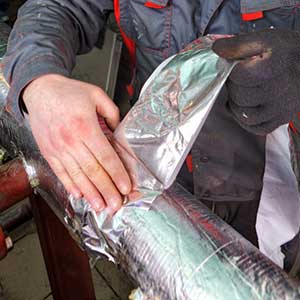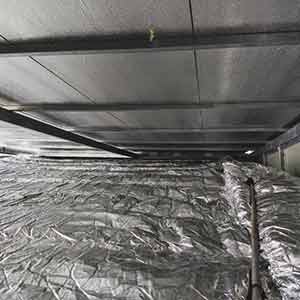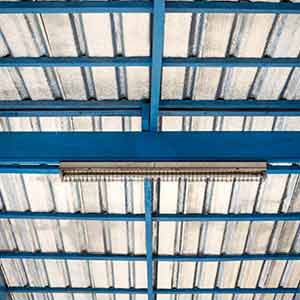Before you start to reach conclusions, first understand how a radiant barrier or fiberglass insulation works. A common question among all the people out there is, which one should be the right pick?
Well, we understand you are feeling insecure about your home energy efficiency.

Like many other questions, we can only tell you, “it depends on many factors”. However, it’s not just that we are trying to avoid the question from you.
Instead, it’s the opposite as after giving you a proper discussion about the two may shed some light on the matter.
Today we are going to compare a radiant barrier with insulation so that you can find the answer on your own.
Adequate Description of Radiant Barrier
Most people are more worried about their comfort zone rather than thinking about the electric bill. Yes, just energy efficiency is not enough, and a comfortable environment should be prior.
For this reason, a radiant barrier is an ideal choice for many houses. Radiant barriers are high for homes, and most of the time, it is installed in attics.
When the summer heat is high, radiant barriers can reduce the heat gain and cooling cost by a margin. The high reflective construction material can reflect heat and reduce heat conduction.
How Radiant Barrier Work?
Let’s move on with a little bit of science talk. You all know, heat always moves from a warm area to a more relaxed space. Just like a cup of coffee transfers its heat to your hands.
So, heat emits through a medium, and for that, they might use air or other cooler material.
The radiant barrier is a reflective insulation system for your home. And when you want to gain effective results, the luminous material should be free within air space.
If the material accumulates any dust particles, the radiant is likely to lose its effectiveness.
When it’s summer, the sun radiates heat to the roof directly. And through the attic, all the heat is going to flow towards the cooler surfaces. So, when you install radiant barrier insulation inside your house, there will be less heat conduction.
Well, radiant barriers are better in warmer conditions. In cooler conditions, they are not that much effective. Thus, it can reduce at least 4 to 12% cooling costs in summer.
You may even be able to install a small air conditioning support for the house. Radiant barrier insulation is a very cost-effective solution for any home in the summer.
Types of Radiant Barrier Insulation
Well, the type of radiant barrier depends solely on the construction material. The insulation is made of highly reflective material – most of the time, aluminum foil.
You can also use craft paper, woods, and other insulation materials to keep heat conduction to a minimum.
Defining Insulation
Insulation mainly means slowing down heat gain inside your house. So, the term means keeping your home temperature the same in every weather condition.
Whether it’s summer or winter, the temperature will always stay the same due to the insulation system.
As we said, insulation absorbs all the heat from the ceiling, and fiberglass insulation is the most common thing in any house. However, the energy-saving cost is not always reduced by insulation. Moreover, it is not as cost-effective as radiant barrier insulation.
Comparative Discussion: How to Choose the Better One?
Now, for the central part of our radiant barrier insulation vs. insulation content. How to choose the better one depends on some critical conditions, and we are going to discuss them in brief.
Cost:
Considering the cost, radiant barriers are better in summer heat conditions. Because radiant barriers can reflect all the heat from the roof and keep your house comfortable, on the other hand, insulation will absorb all the heat, and in hot situations, it cannot reduce your cost.
In terms of cost-effectiveness, a radiant barrier has a slight edge. However, a radiant barrier is not that great against cooler weather conditions.
Comfort and Effectiveness:
Earlier, we said that the radiant barrier is better in terms of cost. However, installing the barrier is not that cheap. But in terms of comfort, the radiant barrier has the upper hand.
We have discussed this earlier as a radiant barrier will reflect all the summer sun heat. So, it can reduce heat gain and let you reduce your electricity bills.
Insulation, on the other hand, absorbs the heat and slows down the heat gain. But for comfort and effectiveness, reflection is always better than absorption.
Conclusion
Just to be sure, you don’t have to think about choosing a radiant barrier over insulation. Both of them are not built for performing the same way. However, to save your valuable energy and save up money, the radiant barrier has the upper hand.
Anybody can see that you save energy twice more than insulation. Places where the weather is sweltering; using a radiant barrier is always the best economic solution.












